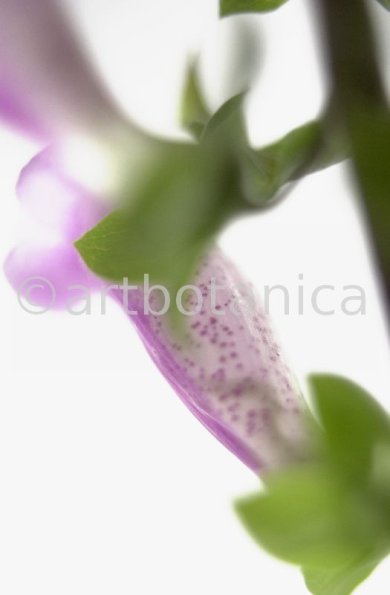
Der in Europa heimische rote Fingerhut ist wie die anderen Digitalisarten sehr stark giftig. Die Pflanze ist ein zweijähriges Kraut und bevorzugt kalkarme Böden, meist auf halbschattigen Lichtungen. Im ersten Jahr bildet sie die Blattrosette, im zweiten entwickelt sich ein bis zu 2 m hoher, meist unverzweigter Stängel, der die Blütentraube trägt. Die glockenförmigen, 4 bis 5 cm langen Blüten sind hellpurpurrot, sehr selten weiß und zeigen innen hellumrandete, dunkle Flecken. Der Rote Fingerhut ist in der Volksmedizin schon lange als Mittel gegen Herzinsuffizienz (Herzschwäche) bekannt und wird seit dem späten 18. Jahrhundert medizinisch verwendet. Digitalis purpurea (Common Foxglove, Purple Foxglove or Lady's Glove), is a flowering plant in the family Plantaginaceae. The leaves are spirally arranged, simple, 10-35 cm long and 5-12 cm broad, grey-green, downy, and with a finely toothed margin; they form a tight rosette at ground level in the first year. Extracted from the leaves, this same compound, whose clinical use was pioneered as digitalis by William Withering, is used as a medication for heart failure. The flowering stem develops in the second year, growing to 1-2 m tall. The flowers are arranged in a showy, terminal, elongated cluster, each tubular, pendent, purple (also pink, rose, yellow, or white in selected cultivars). They are also spotted inside bottom of the tube. Due to the presence of the cardiac glycoside digitoxin, the leaves, flowers and seeds of this plant are all poisonous to humans and some animals and can be fatal if eaten. Extracted from the leaves, this same compound, whose clinical use was pioneered as digitalis by William Withering, is used as a medication for heart failure.
